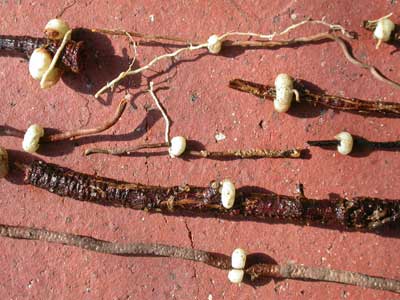Western Australian Christmas Tree
(Nuytsia floribunda)
How does Nuytsia floribunda get its Nutrients?
Nuytsia floribunda is a photosynthetic tree that is also hemi-parasitic via its root system. The tree gains its food and sugar through the photosynthetic process in its leaves. For more information on the basics of photosynthesis go to the following website: http://www.emc.maricopa.edu/faculty/farabee/BIOBK/BioBookPS.html. The tree then gains water and minerals through the use of its own main root system along with its lateral parasitic roots connected to other plants’ root systems.
Parasitism!
These parasitic roots are connected to the host roots via haustoria. A haustorium is a scissor like growth that is born on the end of a root when it comes into contact with a host root. When it finds a host root it is said to slice it in two like a guillotine, and then bonds its own and the host’s vascular tissue (xylem) partially together to receive a portion of the host's water and nutrients (Calladine, 2000). This allows Nuytsia floribunda to survive in the dry summer months of the Southwestern Australian climate. A good host for the tree could be anything from grasses to large trees as far as 150 meters away.
In the photos above are haustoria. In the photo on the right Nuytsia floribunda root haustoria (white ovals 5-15 mm across) attached to many thin white roots underground. In the photo on the left it shows the guillotine scissor-like growth that slices the root in order to attach to its xylem.

